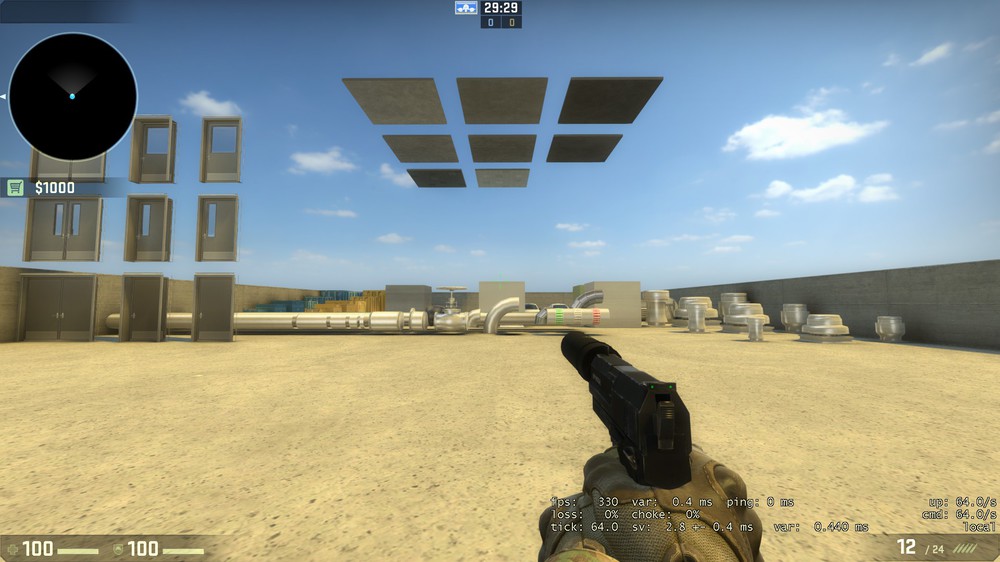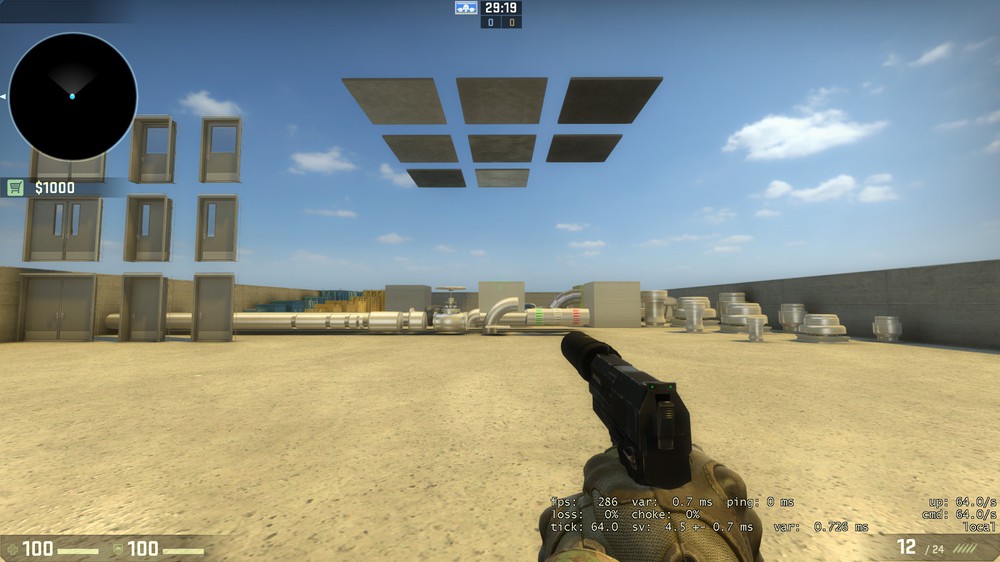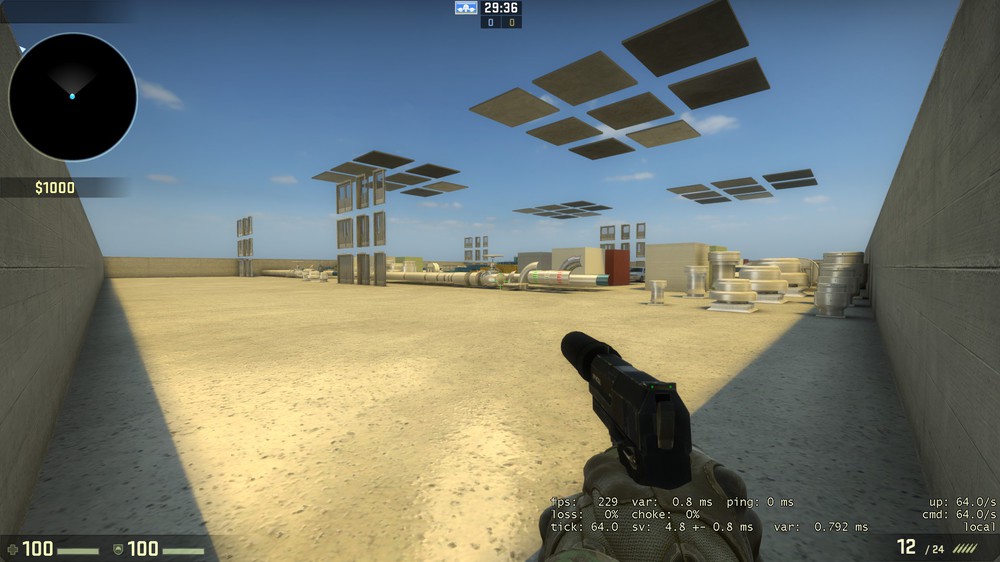A new question?
After successfully solving the eternal mystery of func_detail vs. displacement in my last article (here), I was contacted by the High Council of Source Engine Optimization. Apparently, there seems to be another enigma to be uncovered and a major question to be answered.
What is the fps cost of cheap and expensive assets in Source engine? Is there a significant difference between the two in terms of frame rate? (that’s 2 questions but I’ll let this one slide)
The study
As with the last article, this one is also going to be a short but sweet article; fewer words, more numbers and screenshots. The systematic approach is also going to be very similar: 2 similar test maps where one contains expensive assets while the other has cheap versions of these assets. The assets will be the same and will be located in the same locations in both test maps.
The recent assets added with the new de_nuke update in CSGO will be the perfect candidates for our study as Valve made most of these in cheap and expensive versions. For props, the expensive version is high-poly models while the cheap one is low-poly. For textures, the expensive version gets a normal map (up to 2), specular map, advanced reflections, detail map, and Phong shading in some cases; the cheap version is basically the diffuse map with the occasional detail map.
I will record the localized fps in both versions and compare, then draw conclusions that will hopefully answer the High Council’s question(s).
The testbeds
The first map to test is the one made of cheap assets. It’s basically a simple map consisting of 4 walls and a floor on which are spread several props and textured blocks at predetermined locations. Textures are mostly concrete while props contain crates, cars, pipes, wires, doors, and vents.
The fps recorded is 330 fps. The expensive version is exactly the same but with props replaced with their high poly versions and textures swapped with their expensive versions.
The fps is now 286 fps; interesting. All right, let me call the High Council to relay the news.
Hold your horses right there. We are men of Science and you know that…yes, yes, I know, one map is not enough to draw conclusions.
I’m going to take this map and quadruple it, in area and in content, and test again (Nobel prize here I come). The new map will have 4 times the amount of props and textured brushes (the same ones of the initial map cloned into the new areas) as well as having its total area increased fourfold. We start with the cheap version that we will refer to as test map (4x).
The fps decreased to 279 (from the 330 in the simple cheap map) due to the extra content that the engine has to render. Our main point of concern would still be to compare this version against the expensive one.
You know the drill by now; we will also create the (4x) expensive version.
The fps is 229. The decrease in (4x) version is more or less in line with the one in the simple version. Let’s recap in a table for easier viewing.
As you can see, the fps dropped 44 fps in the simple version and 50 fps in the 4x version, between the cheap and expensive maps respectively.
We can draw 2 conclusions from the above table:
There is a significant drop between the cheap and expensive version (44/50fps), and there is also a substantial drop within the same version (51/57fps) when you add much more content that is all visible in the PVS.
These results can shed some light on the latest update of de_nuke where the overall fps is lower than the rest of the stock maps in CSGO. The high amount of props/details that can be seen/rendered from one location coupled with the expensive assets in the playable area contribute to further decrease in the overall fps in that map (in addition to the open skybox/layout). I have tackled a revised optimization system for de_nuke in a topic of mine last month that can be read here (https://www.mapcore.org/topic/19909-de_nuke-a-revised-optimization-system/)
As a bonus, I’ll throw in the compile times of the above maps so you can witness the effect of cheap vs. expensive, and the additional content in (4x) versions, on the compile time, especially on vrad since it will mostly be affected by the extra faces in the high poly models and the additional vmt switches in the expensive materials.
You can clearly see that vrad times increased considerably between the cheap and the expensive versions, as well as within the same version when we quadrupled the area/content.
Now if you’ll excuse me, I still have a phone call to make; the grand council woman cannot wait any longer.
The final cost
Expensive assets bring visual eye candy to the map in hand which is a necessity in today’s ever-growing and continuously pushed graphics boundaries. Relying on low poly models and cheap textures won’t fare well on the visual fidelity front. However, expensive assets come at a cost of taxing the rendering engine and decreasing the overall fps in the map.
These expensive assets are a requisite if you want your map to shine (pun intended) but one has to be careful not to overuse them. Use them wisely in the playable area and resort to cheap versions when decorating the non-playable areas of the map or any place that the player cannot see up close to discern the difference.











![[CS:GO] Shore](https://www.mapcore.org/uploads/monthly_2023_04/2955084102_preview_20230404120655_1.jpg.77b7071d4e9db1625414c7ad26720f8f.jpg)


Recommended Comments
Join the conversation
You can post now and register later. If you have an account, sign in now to post with your account.
Note: Your post will require moderator approval before it will be visible.